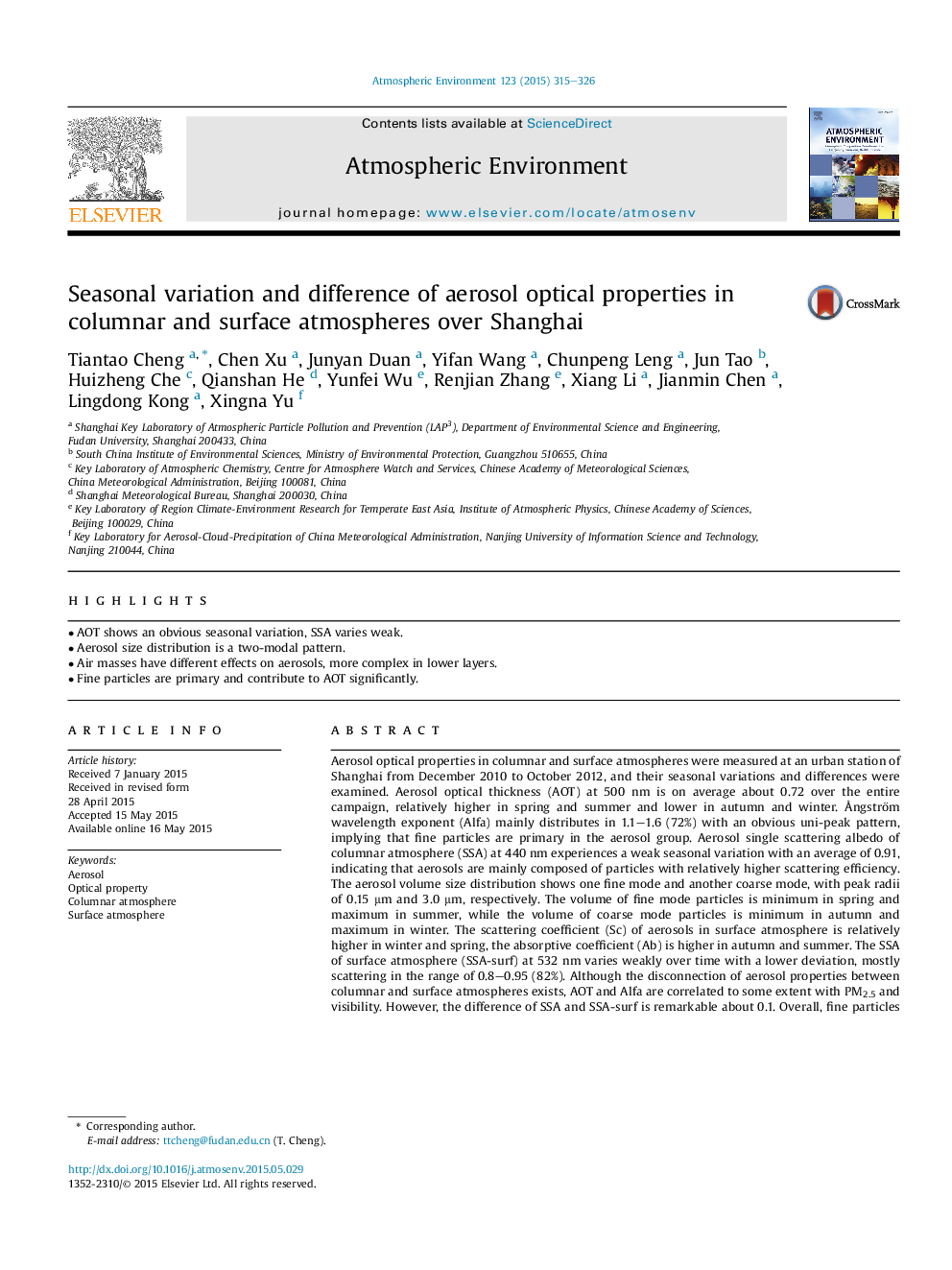| Article ID | Journal | Published Year | Pages | File Type |
|---|---|---|---|---|
| 4438090 | Atmospheric Environment | 2015 | 12 Pages |
•AOT shows an obvious seasonal variation, SSA varies weak.•Aerosol size distribution is a two-modal pattern.•Air masses have different effects on aerosols, more complex in lower layers.•Fine particles are primary and contribute to AOT significantly.
Aerosol optical properties in columnar and surface atmospheres were measured at an urban station of Shanghai from December 2010 to October 2012, and their seasonal variations and differences were examined. Aerosol optical thickness (AOT) at 500 nm is on average about 0.72 over the entire campaign, relatively higher in spring and summer and lower in autumn and winter. Ångström wavelength exponent (Alfa) mainly distributes in 1.1–1.6 (72%) with an obvious uni-peak pattern, implying that fine particles are primary in the aerosol group. Aerosol single scattering albedo of columnar atmosphere (SSA) at 440 nm experiences a weak seasonal variation with an average of 0.91, indicating that aerosols are mainly composed of particles with relatively higher scattering efficiency. The aerosol volume size distribution shows one fine mode and another coarse mode, with peak radii of 0.15 μm and 3.0 μm, respectively. The volume of fine mode particles is minimum in spring and maximum in summer, while the volume of coarse mode particles is minimum in autumn and maximum in winter. The scattering coefficient (Sc) of aerosols in surface atmosphere is relatively higher in winter and spring, the absorptive coefficient (Ab) is higher in autumn and summer. The SSA of surface atmosphere (SSA-surf) at 532 nm varies weakly over time with a lower deviation, mostly scattering in the range of 0.8–0.95 (82%). Although the disconnection of aerosol properties between columnar and surface atmospheres exists, AOT and Alfa are correlated to some extent with PM2.5 and visibility. However, the difference of SSA and SSA-surf is remarkable about 0.1. Overall, fine particles are dominant in aerosols and contribute to AOT significantly in this city, and their difference between surface and columnar atmospheres is unignored.
